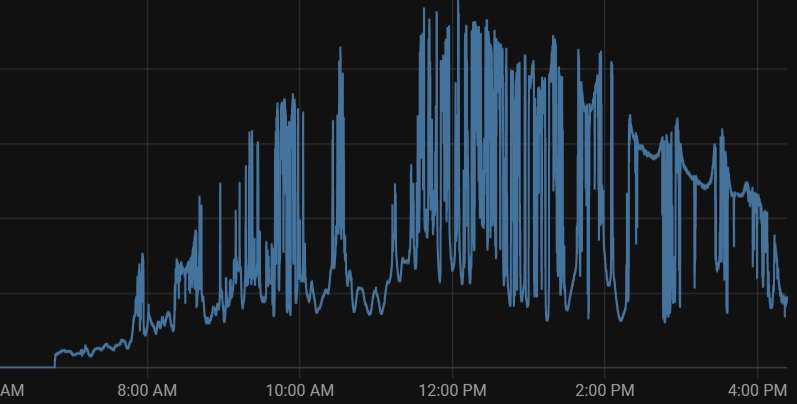Solar Panels, Inverters, and Batteries: A Linked System for Optimized Performance
Solar panels, inverters, and batteries work together to create a solar power system. While they are separate components, their sizing and capabilities are crucial for optimal performance, especially when incorporating battery storage.
Balancing Array Size and Inverter Capacity:
In most scenarios, it’s beneficial to have a solar array sized slightly larger than the inverter’s output. This ensures your home utilizes solar power first, minimizing reliance on batteries during peak sunlight hours. Excess solar energy can then be directed towards battery charging.
Inverter Limitations and Battery Buffering:
It’s important to consider inverter limitations, especially regarding battery output. For example, a 3kW hybrid inverter might only provide 2kW of power from the battery. In such cases, the battery acts as a buffer, supplementing solar power during fluctuations or peak loads.
Grid-Attached vs. Off-Grid Considerations:
Grid-attached systems are designed for maximum self-sufficiency while still connected to the grid. This connection can be used for battery charging or as a backup during insufficient solar production or battery depletion, this is called pass through..
Oversizing Strategies:
For grid-tied systems with no export incentives and low power consumption, oversizing the inverter relative to the panels might be considered. However, under-sizing the array is less common due to reduced winter generation. A common strategy is to slightly oversize the array to compensate for seasonal variations. You can only go so small as to meet the minimum system start up voltage.
Oversizing Limits and Hardware Strain:
Oversizing has limitations. Manufacturers like Victron recommend a maximum 130% oversizing due to voltage and current limitations. Excessive oversizing can lead to “clipping,” where excess power is wasted and puts strain on the inverter or controller.

Advanced Systems with Independent Functionality:
Some advanced systems, like those from Deye/Sunsynk, feature isolated hardware within the inverter. This allows independent operation of the inverter’s AC and DC functions, enabling parallel charging from solar and AC sources.
Example: Sunsynk 8kW SG1/4 System Sizing
Let’s use the Sunsynk 8kW SG1/4 inverter as an example. Its maximum combined charging capacity is 190 amps, requiring a maximum of 10.2kW of solar panels to achieve this.
However, the recommended charging current depends on the battery setup. For a single battery pack, a 40-amp charge current is recommended, translating to a required solar array size of 4.11kW.
Balancing Solar Production, Battery Charging, and Load Consumption:
Remember to factor in your typical load consumption. During peak usage times, such as early mornings when everyone is getting ready, your load might be 6kW.
With a 4.11kW solar array, depending on its orientation, full power generation might not be reached until later in the morning. This could lead to a temporary power deficit, drawing from the battery instead of charging it after overnight discharge.
Key Takeaway: Finding the Optimal Balance
The ideal system size is not simply the sum of your load and solar array requirements. A comprehensive analysis of your energy usage patterns, battery capacity, and inverter capabilities is crucial for finding the optimal balance between maximizing solar energy use, minimizing grid dependence, and ensuring efficient battery charging.
Solar Panel Array Size:
- This refers to the total wattage capacity of all the solar panels you install. It determines how much electricity your system can generate.
Inverter Size:
- The inverter converts the DC (direct current) electricity produced by the panels into usable AC (alternating current) for your home. In general, the inverter size should be close to, but not necessarily exactly the same as, the total DC wattage of your solar array.
Here’s why the inverter size might not perfectly match the array size:
- Array-to-Inverter Ratio: This ratio compares the DC capacity of the array to the AC output of the inverter. Most systems are designed with a ratio between 1.15 and 1.25. This means the array can be slightly oversized to capture more energy during peak sunlight hours, even if the inverter can’t handle it all. The excess gets “clipped” and lost.
split arrays:
Having a single array is becoming less common, the roof mount systems are often not ideal and therefore require an optimized approach to how and why and the various requirements of your power needs. The winter array maybe more vertical for better generation in winter, it may also be a larger array or it can be a parallel array. read more here

No responses yet